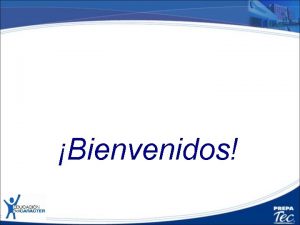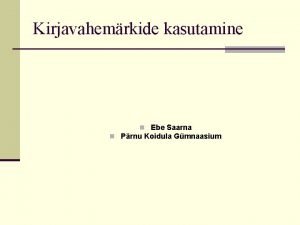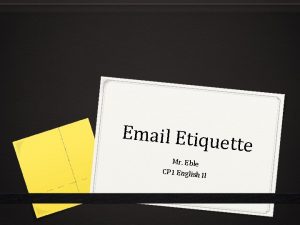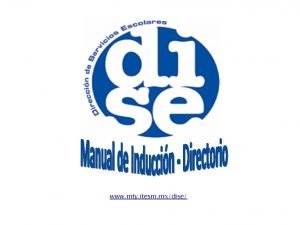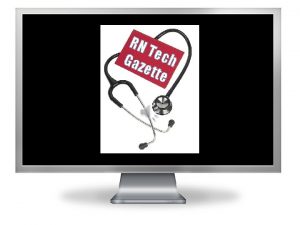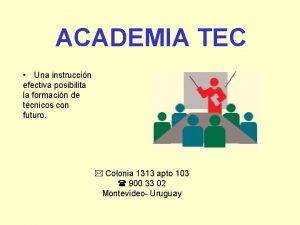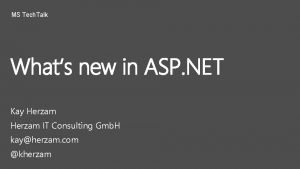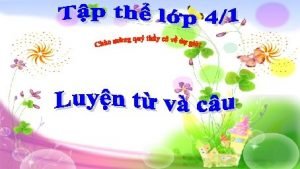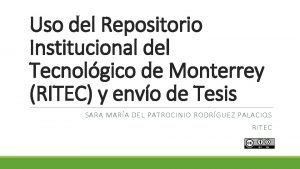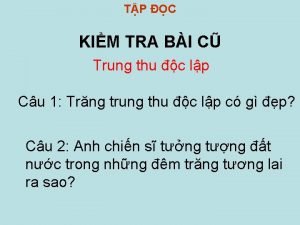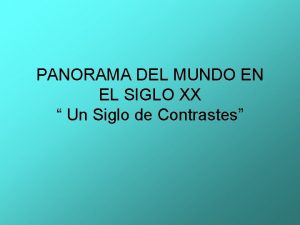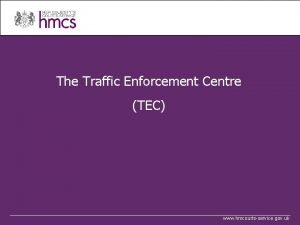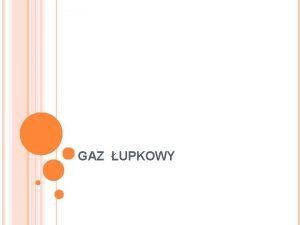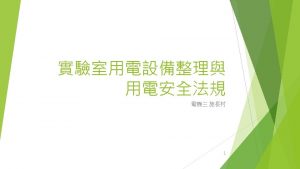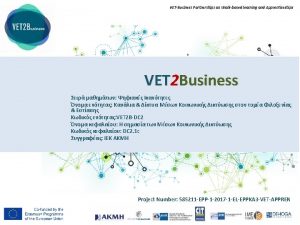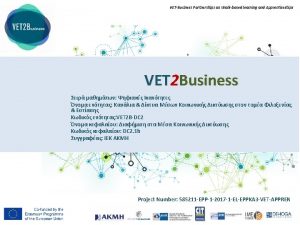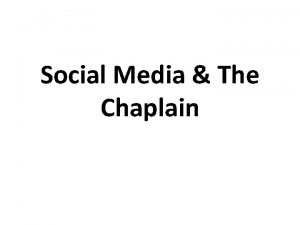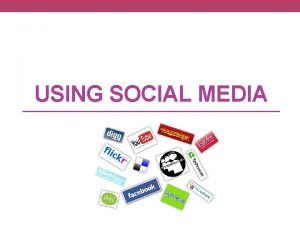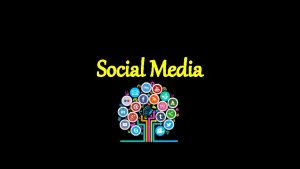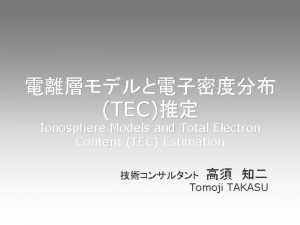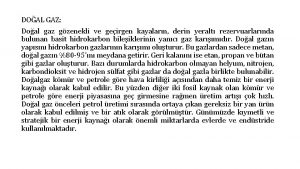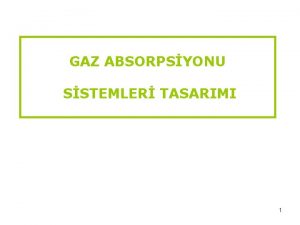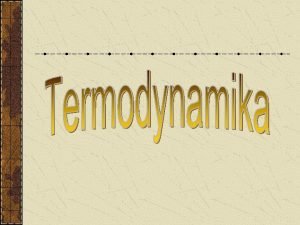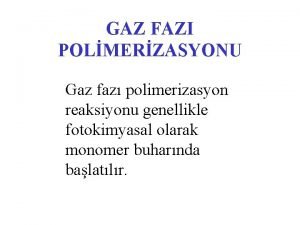RN Tec Gaz h ette Social media and


























- Slides: 26

RN Tec Gaz h ette

Social media and nursing practice: Changing the balance between the social and technical aspects of work Evan Casella, Jane Mills, RN, BN, MEd, Ph. D, FACN, Kim Usher, RN, RPN, A/Dip. NEd, BA, BHSc, MNSt, Ph. D, FACN, FACMHN

Introduction • Sociotechnical theory was conceptualized in 1960’s by Eric Trist and Fred Emery and is defined as an approach to complex organizational work designs that recognize the interaction between people and technology in work places. • They studied a phenomenon within a coalmine's change in practice in the 1950’s. • The miners were introduced to a new method of mining, forcing them to communicate in different ways, which led to increase in communication, more flexibility, and adaptability in the coalminers approach to work.

Benefits of Sociotechnical Theory in Nursing • Encourages cooperative behavior instead of competitiveness • Increases communication networks • Brings balance between social and technical aspects of work • Results in higher efficiency • Enhanced patient care

Technically-balanced workplace systems = enhanced patient care

Social Media • Social media can be used to heighten sociotechnical systems by facilitating communication between professional colleagues and between patients and nurses. • Many health professionals have shown some resistance to integrating social media into their work due to concerns of: • Usefulness • Compatibility • misuse


Types of Social Media • Social media comprises tools for sharing and discussing information among people. • It refers to user generated information, opinion, and other content shared and discussed digitally. • Examples of social media: • • Social networking Content sharing Web publishing Wikis

Social Networking Most commonly used form of social media – offers a convenient way to share information and stay in touch.

Web Publishing Allows anyone to publish material on the web – provides opportunity for professionals to share and promote their ideas. Blogging is a prominent form of web publishing.

Content Sharing With content sharing, users can share a range of media and document files, such as pictures and videos.

Wikis Collaborating social media tools allow users to work together by using a shared website where a number of participants can edit information.

How is this technology used in nursing? ?

The Nursing Process • 5 steps to the nursing process • Assessing • Diagnosing • Planning • Implementation • Evaluation

Assessing Phase • m. Health sites have been designed to send and receive health information that links clients to health professionals. • Examples: • Apps used to track blood glucose results - used by school nurses with students to assess their health via social networks. Nurses were able to develop contacts lists of students and their treatment needs. • Content sharing - used in assessing wound healing. Clients can use smart phones to upload pictures/videos of wound healing to a private content sharing site. Comments and advice could be attached to the images from health professionals.

Diagnosing Phase • In the diagnosing phase, professional web-based information sharing might provide nurses with a wealth of diagnostic knowledge. • Nurses can take information from blogs, critically analyze it, investigate its evidence base for validation and apply it to their diagnoses.

Planning Phase • Wikis are very useful during the planning phase. • Wikis allow multiple users to upload and edit information which help nurses source, share, and comment on evidence-based practice. • Nurses can investigate potential care plans and can refer to the wiki to search for possible interventions that have been proven successful.

Implementing Phase • • • Social media can increase the level of support offered to clients while requiring fewer in-person meetings. This style of practice increases accessibility as well as cost effectiveness of health care. Nurses can care for multiple clients with similar conditions at the same time.

Evaluation Phase • Social medial can be used to improve the nursing process through patient feedback. • Clients often use blogs to narrate their experiences of illness and might speak directly of the healthcare provider. • Nurses can increase patient/nurse relationships by analyzing patient narratives and reflecting their experiences into their own practice.

Real-world Examples of Social Media in Nursing Power outages – health professionals can use secure social media accounts (i. e. Twitter) to alert of cancelations Medication reminders – nurse can send alert and reminders to take their medication

Real-world Examples of Social Media in Nursing • Private Facebook page – helps share information to a private group (i. e. The Resource Team) about staffing needs, education classes, staff meetings, etc.

…. in conclusion

Benefits of Social Media in Nursing • Increases transparency, which has led to better client care • Leads to more collaboration amongst healthcare providers • It is cost effective • It makes healthcare more accessible • Increases nurse competency • Gives healthcare a greater social presence. …. which all promote BETTER CARE!!!


Reference Page • Casella, E. , Mills, J. , Usher, K. , (2014). Social media and nursing practice: Changing the balance between the social and technical aspects of work. Collegian, 21, 121 -126.

Password for Centra Health resource nurses: networking nurse Email this password along with quiz answers to Crystal. Nash@centrahealth. com
 Richard huett
Richard huett Karmen kiil
Karmen kiil Des mata lauselühend
Des mata lauselühend Ette email
Ette email Type of people as media
Type of people as media Registro administrativo itesm
Registro administrativo itesm Tec 37
Tec 37 Rn-tec
Rn-tec Quest tec valves
Quest tec valves Banc tec
Banc tec Academia tec
Academia tec Tec 100
Tec 100 Slant tec
Slant tec Sinco tec
Sinco tec Tec-138-702
Tec-138-702 Tec login
Tec login Herzam tec
Herzam tec Sinda fluint
Sinda fluint Mát téc lích
Mát téc lích Vývoj ecommerce
Vývoj ecommerce Repositorio tec de monterrey
Repositorio tec de monterrey Mát téc lích
Mát téc lích Bw contest
Bw contest Ead tec carbonifera
Ead tec carbonifera Overviewwatch
Overviewwatch Tec traffic enforcement centre
Tec traffic enforcement centre Hi tec zang
Hi tec zang
